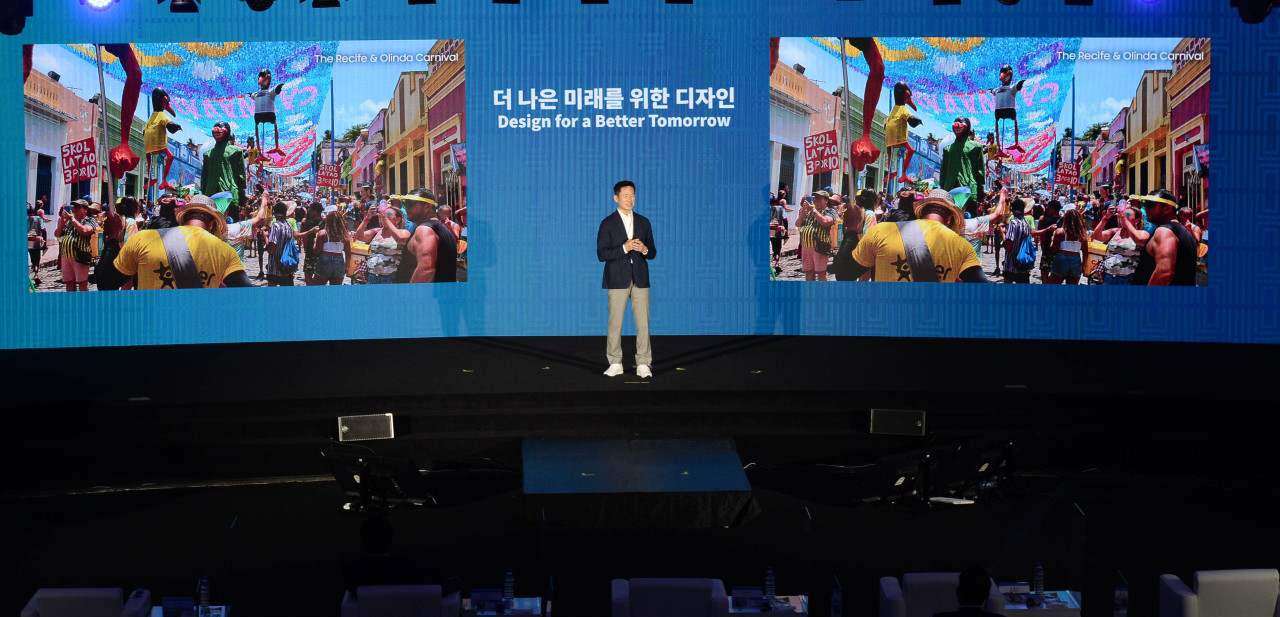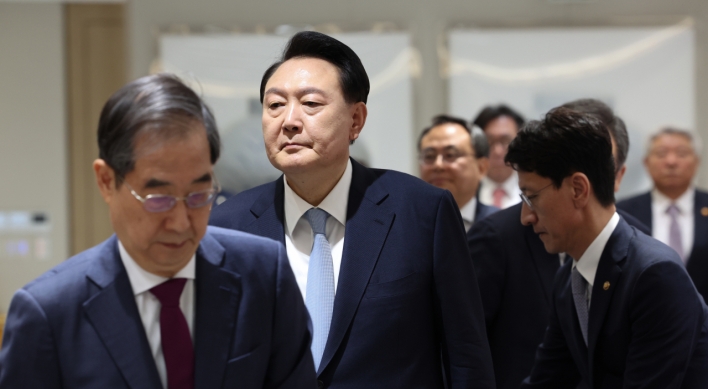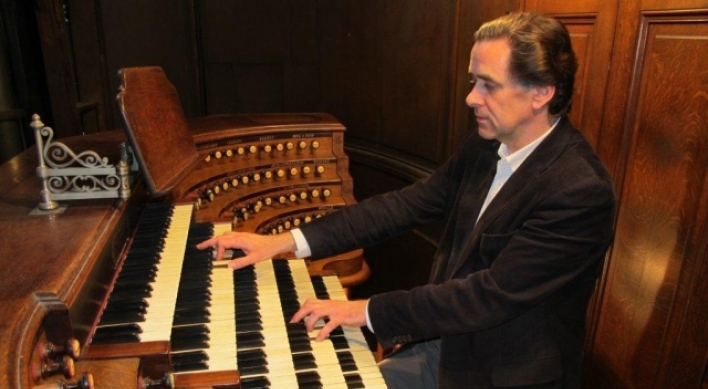[Herald Design Forum 2021] Herald Design Forum ponders ‘What comes after?’
Held online and offline, forum discusses how design should adapt to changes brought on by pandemic and look beyond
By Shim Woo-hyunPublished : Oct. 14, 2021 - 20:10

Emerging from the darkest days of the pandemic, many countries, including South Korea, are now talking about “life with COVID-19.” It is against this backdrop that the Herald Design Forum brought together some of the world’s most renowned designers, architects and artists with the aptly themed title of “What comes after.”
“Mankind is now in its way into the post-COVID-19 era. Things will greatly change and the field of design is not an exception. The latest edition of the annual Herald Design Forum is an attempt to help overcome limits and issues caused by the pandemic,” said Jeon Chang-hyeop, CEO and publisher of Herald Corp, which organizes the event, in his opening remarks Thursday.
In its 11th edition this year, the forum, Asia’s largest on design, kicked off on the Sevit floating island on the Han River in Seoul, where participants and the audience shared their respective visions for design of the future amid the pandemic, which has spurred numerous pressing issues for our time.
The event this year was held both online and offline due to the COVID-19 pandemic, with over 1,000 participants tuning into livestreamed sessions. Among the distinguished guests who attended the event in person was Jungheung Construction Vice Chairman Jung Won-ju.
Oh Young-woo, vice minister of culture, sports and tourism, delivered a congratulatory speech in which he said, “The Herald Design Forum could provide impetus to the country’s design sector to grow further.”
Lee Don-tae, the head of the Corporate Design Center at Samsung Electronics and one of the speakers for the forum, also congratulated the latest edition of the forum for being held successfully despite the pandemic situation.
“I think it is a great challenge to hold such an event during the COVID-19 pandemic for the second consecutive year,” Lee said.
Renowned figures from design-related sectors both here and abroad have joined the forum to share their ideas and insights, shedding light on how the field of design has changed amid the pandemic, as well as what changes it can potentially bring in the future.
Lee opened the speech session by stressing that industrial designers must be aware of emerging trends marked by new technologies so they can offer products that are designed around people’s new lifestyles, values and needs.
British architect Amanda Levete, who founded architecture studio AL_A in London, spoke about the importance of public spaces, which will continue to bridge people even after the pandemic. Levete introduced her project at the Museum of Art, Architecture and Technology in Lisbon, Portugal, through which the architect tried to create a new public space that connects people.
Benjamin Hubert, a London-based industrial designer and the founder of design agency Layer, focused on the need to adapt to the behavior changes caused by the global pandemic, digitalization, the “fourth industrial revolution” and climate change. Hubert introduced how his design studio is focusing on reducing its carbon footprint and its efforts to design new products for them to be eco-friendly and timeless.
Jeffrey Ludlow, a creative director at the Point of Reference Studio in Madrid, explored problems in outdoor signs used for advertising and media. Ludlow, who thinks critically about signage as a major contributor to environmental issues, introduced new solutions aimed to make our urban landscapes more eco-friendly and sustainable.
DIA Studio co-founder and creative director Mitch Paone shared how DIA Studio has developed a new approach to designing identity systems. Paone also showed detailed tools and measures that his studio has adopted to create visuals that can effectively deliver identities of globally influential companies and organizations.
Jeon Sang-hyun, Hermes’ art director for digital platforms, spoke about his values as a digital creator. He expressed hopes that designers can create their works based on sincerity and further find true meaning to generate internal changes.
Ray Winkler, CEO and design director of Stufish Entertainment Architects, spoke about how architects can respond to the rapidly changing entertainment industry, accelerated by the outbreak of the COVID-19 pandemic.
Yong Kim, chief product officer at Woowa Brothers, which runs popular Korean delivery app Baemin, said designers should now be able to help build better communication between machines and humans. Aesthetic appeal is no longer the priority for designers, who should use artificial intelligence to bring about a better user interface experience, according to Kim.
Kwon Young-jin, who leads Hyundai Motor Group’s Zer01ne Playground, an open innovation platform, highlighted “diversity” and “universality” in mobility, saying anyone, including people with disabilities, should have freedom in movement. Kwon described self-driving wheelchairs as a starting point to set his initiative in motion.








![[KH Explains] How should Korea adjust its trade defenses against Chinese EVs?](http://res.heraldm.com/phpwas/restmb_idxmake.php?idx=644&simg=/content/image/2024/04/15/20240415050562_0.jpg&u=20240415144419)










